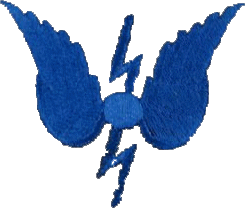|
WHERE USED/FITTED | |
The Type 47 Series (Types 47, 47P, 47M) were SUBMARINE transmitters dating from the 1927/1928 period in design. They were still fitted in 1939 (and saw the war through until 1945) and beyond as follows:-
Type 47: (BASIC SET) - Oswald, but the Type 47M is earmarked for replacement.
Type 47P: (Final MODIFIED SET) - Cachalot, Clyde, Grampus, Narwhal, Oberon, Otway, Oxley, Rorqual, Seal and Seven.
Type 47M: (1st MODIFICATION SET) - Odin. Olympus, Orpheus, Osiris, Oswald, Otus, Pandora, Pathian, Perseus, Phoenix, Porpoise, Proteus, Rainbow, Regent, Regulus, Rover, Thames.
Type 47 (see above) - this range of sets were fitted into submarines as a high power L/F-H/F-HH/F valve sets with Spark addition and a low power set.
It consisted of five separate transmitters and one drying out circuit and is contained in eight wooden panels. The font of five of these panels form the back wall to the silent cabinet and all panel controls and indicating instruments are accessible to the operator, so that, once transmitting circuits are tuned and adjusted to a desired frequency the switching arrangements and controls of H.T. and filament voltages of the transmitters can be operated by him, without his moving from the silent cabinet. A Harbour Exercise Set (transmitter 4R) working from the ships mains and a 4V battery is fitted inside the safety cage. . The L/F set has two functions the first and obvious one to be the L/F transmitter. If the deck and aerial insulators were drenched with sea water (spray when on the surface) and the L/F transmitter couldn't maintain aerial oscillations, the "dryout circuit" was brought into play, the second function. This involved switching the L/F transmitter output to the drying out coil and pressing the Morse key for a few sections when hopefully the RF radiated would 'dry out' the dampness at the top end of the aerial coil to enable aerial current to be seen. The Type 46 (also a submarine transmitter) had the same facility so please read this file for a full explanation of "drying out" Type 46 Drying Out Circuit.
The Series variants involved 'tweaking' the frequencies. The Type 47P is a more modern set than Type 47M, which is a Type 47 with a modified HF panel.
As per usual, all necessary transmitter operating switches and controls are fitted on the control panel which is sited inside the Silent Cabinet with the operator (see PRE WW1 Files). This picture describes the operation of the Board 2R Controlling |


